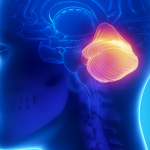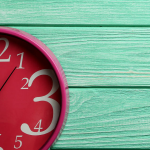Botanical Formulations
Part I
JAMES SENSENIG, ND
JARED ZEFF, ND, VNMI, LAC
This column is transcribed from a weekly live conversation produced by the Naturopathic Medical Institute (NMI). The goal of NMI is to preserve and promote the principles of naturopathic philosophy through clinical application, in your offices and in your communities, every day. This lightly edited transcript (by Judith Boice, ND, LAc, FABNO) was the first part of a 3-part conversation hosted by Dr Sensenig and featuring Jared Zeff, ND, VNMI, LAc, and took place on October 18, 2017.
Interstitial Cystitis
Dr Zeff: I have a basic kidney/bladder tonic formula that I use for bladder infections and kidney problems in general: equal parts of Chimaphila, uva ursi, Althea, juniper berry, and Equisetum. I put it in capsules, and I also make it up as a tincture. I may vary it if there are specific reasons to do that. Typically, with a day or 2 of this, a bladder infection is gone. I will probably combine it with a homeopathic medicine – most likely Cantharis, but it could be all kinds of things. If it’s a recurrent problem, of course, you look at why. And “why” has to do with diet and other factors like that.
I’m becoming “famous” as a person who treats interstitial cystitis. Interstitial cystitis is usually easy to reverse but is a bad problem. I had a patient come to me who said that she was just diagnosed at the University of Oregon Medical School. They told her, “There is no treatment, but we have a support group, because there’s a high degree of suicide with this problem.” That was what they left her with.
Then she came to us. We changed her diet, did some hydrotherapy, gave her some of this formula, and eliminated the interstitial cystitis.
Benefits and Uses of Rauwolfia
Rauwolfia is a very useful botanical, but it’s hard to get. It’s very effective most of the time for hypertension. At some point, the FDA is going to figure out the last few places you can get it, and then eliminate those.
Remember always to ask, “What is to be cured?” Hypertension is not what we’re trying to cure. But with that in mind, there are things that we need to do sometimes to get the blood pressure down while we’re working on the cause, so that we don’t need to continue medicating it.
This is a typical formula that I would use to medicate hypertension while I’m eliminating the reasons why the patient has it. Rauwolfia does have some potential side effects. I really like Rauwolfia. It is very reliable, but I’ve seen 1 patient out of many hundreds who became depressed. That’s a contraindication. As soon as I took him off the Rauwolfia, within a day or two, the depression was gone. It can do that because of its effect on the serotonin pathway.
I’ve had 3 male patients develop gynecomastia while on Rauwolfia. I’ve had about 10 patients develop sinus congestion that was bad enough that they wanted to get off of this medication.
But there are many alternatives. If I can’t use Rauwolfia, I’ll substitute Crataegus. It doesn’t have as strong an impact, but it will often reduce blood pressure. I may even add Crataegus to this formula. I’ll use Tilia, Viburnum, all kinds of things. I use a diuretic formula – 3 parts Petroselinum and 1 part Phytolacca – to “diurese” while I’m trying to eliminate why the person is having the hypertension.
Low-Dose Botanicals
I mentioned low-dose botanicals. There are 2 formulas that go by the name of “Turska’s Formula,” and this is one of them. (Dr William) Turska was one of our teachers. I don’t remember how long ago he died [ED: August 25, 1995], but he was an amazing older doctor. One day he wrote this on the board and said, “Use this to treat pelvic pain, cysts, endometriosis.”
I mentioned Les Moore’s book, Classical Formulas in the Western Herbal Tradition. This is a very nice little book. Also, Francis Brinker’s book, The Toxicology of Botanical Medicines, and Mitch Stargrove’s book, Herb, Nutrient and Drug Interactions are books that I keep within reach of my desk. If I have any questions, I just grab them. These are my “go to” books for botanical information. Les Moore’s is my formula book, although Cloyce Wilson’s book, Useful Prescriptions, is an old one that’s been published on our website.
This is a formula entirely of what we call low-dose botanicals. You take a four-ounce bottle and add the following:
- 30 drops of Aconitum tincture
- 30 drops of Gelsemium tincture
- 30 drops of Bryonia tincture
- One dram (4.8 ml, or approximately 1 teaspoon) of Phytolacca
Preparation: QSAD, which is Latin for “add a quantity of AD (aqua distillata – distilled water) sufficient” to fill up 4 ounces. [ED: QSAD stands for the Latin phrase quantum sufficit ad, meaning “as much as is sufficient.”] So, you take a four-ounce bottle, you put these herbs in, and then you fill the bottle up with distilled water. The “sig” is 1 teaspoonful 4 times a day.
I have a patient on that right now. She came to me with abdominal pain. After examining her, I started her on this formula. The next day, the pain was about 95 percent gone. By the end of that day, it was totally gone. It’s a very useful formula.
This is one of Turska’s formulas. There’s a different one that is Turska’s liver formula. The formula I just described is his cyst formula. He called this cyst formula his “uterine cyst, ovarian cyst, mammary cyst, fibrocystic breast disease, coronary artery disease, angina pectoris, costalgia, respiratory conditions, neuromusculoskeletal conditions, and abdominal pain” formula. In other words, just about anything that hurts. It’s contraindicated in pregnancy, because of the toxicity potential. But it’s a very nice formula. It is toxic, in a sense, but it’s less toxic than Tylenol.
Antibacterial Botanicals
I gave a talk a number of years ago. I was invited to do a “grand rounds” at the local hospital. There was a friendly medical doctor there that liked me. She was Jamaican – that’s probably why she likes us. She arranged for me to come and do a “grand rounds.” I thought that it would be cool to do.
I had just successfully treated a woman who had a staph osteomyelitis in her leg. They were going to amputate her leg at that hospital. I thought, “I’ll present that case, and show them how to heal that, instead of cutting off her leg.”
I talked about treating antibiotic resistant infections. I gave some lists of botanical medicines. These are based upon laboratory studies of plating the botanicals against bacteria and other things somewhat like that. The following are anti-Staph aureus botanicals:
- Arctium lappa
- Allium
- Arctostaphylos uva-ursi
- Eucalyptus
- Eupatorium
- Honey. Honey is an amazing medicine. If a wound is infected, you can pack it with honey, and typically it eliminates the infection.
- Hydrastis canadensis
- Hypericum
- Hyssop
- Lomatium
- Paeonia
- Plantain
- Salvia
- Trifolium pratense
- Usnea barbata
That’s a lot of botanicals, many of which grow wild within probably a few miles of where you live. These are effective when plated against Staph aureus. That includes MRSA, because the botanicals don’t differentiate methicillin-resistant Staph from non-methicillin-resistant Staph.
- Some anti-Strep herbs: Allium, honey, Hydrastis, Plantago, Lomatium, Salvia
- Anti-Pseudomonas botanicals: garlic, goldenseal, Lomatium, Salvia, Usnea
- Anti-E. coli: Allium, garlic, Eupatorium, Hydrastis, Hypericum, Lomatium, Paeonia, Usnea, uva ursi
- Anti-tuberculosis: garlic and Usnea
Benefits and Uses of Lomatium
I make tincture of Lomatium. I go up into the eastern Cascades and gather a few roots every year, and I tincture them. The dosage that (Dr John) Bastyr told me for Lomatium was 1/10 to 1 drop per dose. I use 2 or 3 drops on the tongue. Typically, that will take out a sore throat within 5 minutes.
Here at the conference, I’ve been taking it twice a day, because some people have been coughing around here. I’m not going to do that, so I’m using my Lomatium.
Lomatium is a very interesting botanical. During the 1918 flu epidemic, the Native American ambassador to the US government for the Portland area wrote a letter to the Smithsonian Institute, which discusses how the Native Americans here are not getting the flu. It seemed everybody in the world was dying from the Spanish flu in 1918, but the local Native Americans had this root they were using that was preventing the flu. It was effective in treatment. That root was Lomatium dissectum, which the local people where I live call chaloosh. We go up into the hills and gather it. It’s an extremely potent medicine. Dr Bastyr used to gather it in the eastern Cascades, which is where it grows.
Usnea, Hydrastis, and Other Antivirals
Usnea grows wild all over the Northwest, and probably all over the United States. Down in Louisiana and Georgia they have something similar called Spanish moss.
I want to reverse this a little bit. When we were students at NCNM (National College of Naturopathic Medicine, now NUNM), things were different. We were essentially unregulated. We had a law, and it had some very strict rules, like thou shalt not penetrate the skin or mucus membrane for a therapeutic purpose. But there were so few of us, we were considered a dead profession. I don’t even know if most of the authorities knew we even existed still.
So we did all kinds of things. We ran the lab. We did our own lab work, and so on. We had live cultures in our lab. I was responsible for keeping diphtheria and Staph aureus alive for my first year of school. We had all kinds of things which we probably weren’t supposed to have. But we would take these cultures in test tubes, and we would put in a little loop, and then plate them on various kinds of agar. Then we would take botanical tabs – things that have been soaked in botanical medicines – and put them as if we were doing an antibiotic resistance test. We would incubate them; then we would report on our results. One of the things we found was that Hydrastis killed just about everything. That was one of my favorite herbs. Hydrastis took out Staph aureus, Pseudomonas, gonorrhea, Strep species, syphilis (we had syphilis cultured too!), Vibrio cholera.
These are antiviral botanicals. It’s not a comprehensive list, but it’s a good list: Allium sativa, Glycyrrhiza, Hypericum, hyssop, taheebo, Melissa, Chamomilla, and Ganoderma (mushrooms; reishi, shiitake).
I make an antiviral formula which I find useful in different circumstances: Hypericum, Melissa, Glycyrrhiza, and Lomatium. I like to add Lomatium to everything. It’s a very nice, very potent antimicrobial botanical that has immune tonic properties.
Anti-Parasitic Herbs
Here are some antiparasitic herbs: Artemisia, Cinchona, Gentiana, Juglans, Inula, Spigelia, and there are many others.
You’ll note on the Bolen Test, you can see a certain kind of parasite that’s fairly common. Then you give the appropriate antiparasitics, and redo that, and they’re gone.
Tips for Formulating Botanicals
A simple note on formulating: Dr Turska gave us several methods of putting together botanical formulas. He said, “Most of the time, you’re going to have a primary action that you want from the formula.” Say the person has bronchitis. So, you want a botanical medicine that will effectively deal with their bronchitis. Then you’re going to have 1 or 2 medicines to moderate that effect.
Example: Prunus is tonifying to the lungs; it improves the blood flow to the lungs. It is soothing to the lung mucosa. Glycyrrhiza is somewhat soothing to the lung mucosa. Prunus is somewhat drying; Glycyrrhiza is somewhat moisturizing. With Asclepias, which is a little bit harsh, you modify that harshness and the power of the Asclepias with Glycyrrhiza and Prunus, and a little tiny bit of Bryonia to synergize the formula, and you know what homeopathic Bryonia does for the lung tissue. It’s a major remedy for pneumonia and chest pain.
So, we have here a formula, and you can use this concept and apply it in a thousand different ways: 1 or 2 primary herbs, 2 or 3 secondary herbs, a synergist as appropriate. You might have 2 or 3 kinds of secondary herbs to moderate the effects of the formula.
Botanical formulating is fun and easy. So, if you’re not doing it, start.

James Sensenig, ND was a 1978 graduate of NCNM in Portland, OR. For over 40 years he maintained an eclectic practice in Hamden, CT. Over the years, Dr Sensenig held prominent positions in the various naturopathic colleges and the AANP. A champion of classical naturopathic medicine, Dr Sensenig received an Honorary Doctor of Naturopathic Philosophy degree from CCNM, and received numerous awards for his dedication to teaching the principles of naturopathic medicine.

Jared L. Zeff, ND, VNMI, LAc, is a licensed doctor of naturopathic medicine and a licensed acupuncturist. In addition to functioning as Medical Director at the Salmon Creek Naturopathic Clinic in Vancouver, WA, Dr Zeff teaches on the faculty at National University of Natural Medicine in Portland, OR, where he was also Dean from 1988 to 1993, and holds a professorship in Naturopathic Medicine. Dr Zeff is a graduate of the University of California, NCNM, and the Emperor’s College of Traditional Oriental Medicine. He, along with Pamela Snider, is the author of the AANP’s Definition of Naturopathic Medicine, and the Therapeutic Order concept.









